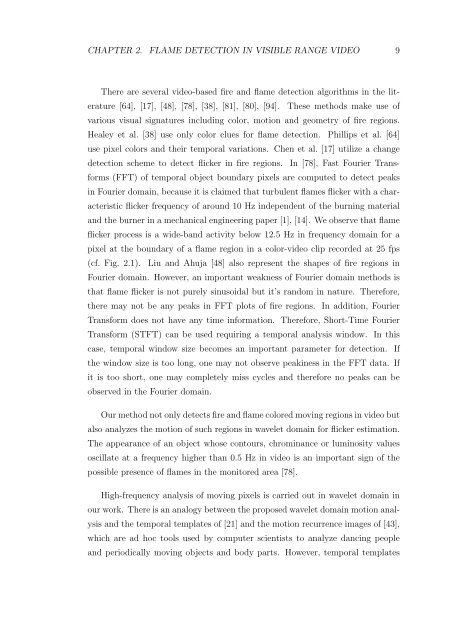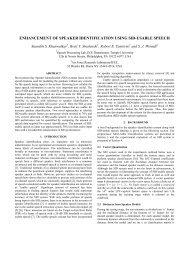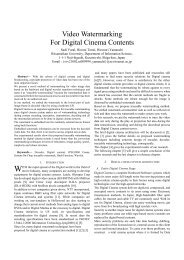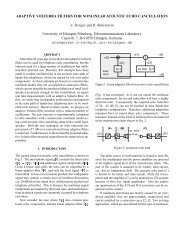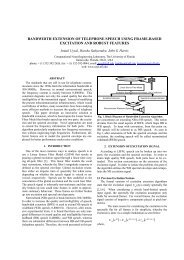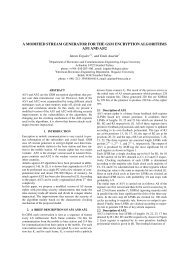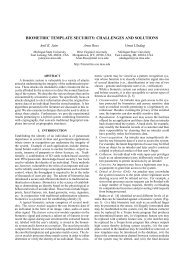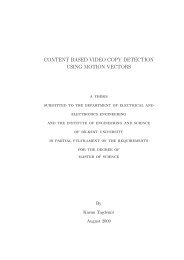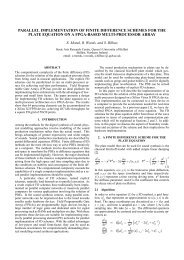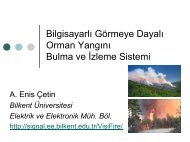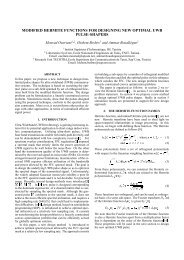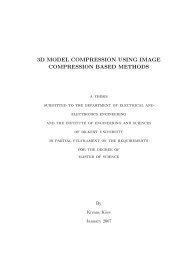Fire Detection Algorithms Using Multimodal ... - Bilkent University
Fire Detection Algorithms Using Multimodal ... - Bilkent University
Fire Detection Algorithms Using Multimodal ... - Bilkent University
You also want an ePaper? Increase the reach of your titles
YUMPU automatically turns print PDFs into web optimized ePapers that Google loves.
CHAPTER 2. FLAME DETECTION IN VISIBLE RANGE VIDEO 9<br />
There are several video-based fire and flame detection algorithms in the literature<br />
[64], [17], [48], [78], [38], [81], [80], [94]. These methods make use of<br />
various visual signatures including color, motion and geometry of fire regions.<br />
Healey et al. [38] use only color clues for flame detection. Phillips et al. [64]<br />
use pixel colors and their temporal variations. Chen et al. [17] utilize a change<br />
detection scheme to detect flicker in fire regions. In [78], Fast Fourier Transforms<br />
(FFT) of temporal object boundary pixels are computed to detect peaks<br />
in Fourier domain, because it is claimed that turbulent flames flicker with a characteristic<br />
flicker frequency of around 10 Hz independent of the burning material<br />
and the burner in a mechanical engineering paper [1], [14]. We observe that flame<br />
flicker process is a wide-band activity below 12.5 Hz in frequency domain for a<br />
pixel at the boundary of a flame region in a color-video clip recorded at 25 fps<br />
(cf. Fig. 2.1). Liu and Ahuja [48] also represent the shapes of fire regions in<br />
Fourier domain. However, an important weakness of Fourier domain methods is<br />
that flame flicker is not purely sinusoidal but it’s random in nature. Therefore,<br />
there may not be any peaks in FFT plots of fire regions. In addition, Fourier<br />
Transform does not have any time information. Therefore, Short-Time Fourier<br />
Transform (STFT) can be used requiring a temporal analysis window. In this<br />
case, temporal window size becomes an important parameter for detection. If<br />
the window size is too long, one may not observe peakiness in the FFT data. If<br />
it is too short, one may completely miss cycles and therefore no peaks can be<br />
observed in the Fourier domain.<br />
Our method not only detects fire and flame colored moving regions in video but<br />
also analyzes the motion of such regions in wavelet domain for flicker estimation.<br />
The appearance of an object whose contours, chrominance or luminosity values<br />
oscillate at a frequency higher than 0.5 Hz in video is an important sign of the<br />
possible presence of flames in the monitored area [78].<br />
High-frequency analysis of moving pixels is carried out in wavelet domain in<br />
our work. There is an analogy between the proposed wavelet domain motion analysis<br />
and the temporal templates of [21] and the motion recurrence images of [43],<br />
which are ad hoc tools used by computer scientists to analyze dancing people<br />
and periodically moving objects and body parts. However, temporal templates


